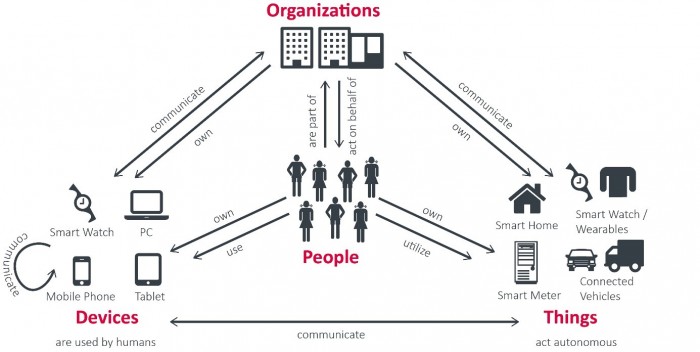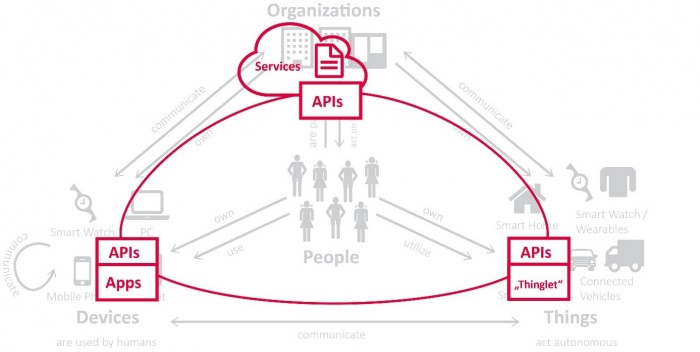Over the past years, we talked a lot about the Computing Troika with Cloud Computing, Mobile Computing, and Social Computing. We raised the term of the Identity Explosion, depicting the exponential growth of identities organizations have to deal with. We introduced the need for a new ABC: Agile Business, Connected. While agility is a key business requirement, connected organizations are a consequence of both the digital transformation of business and of mobility and IoT.
This rapid evolution in consequence means that we also have to transform our understanding of identities and access. We still see a lot of IAM projects focusing on employees. However, it is about employees, business partners, customers and consumers, leads, prospects etc. when we look at human identities.

Fig. 1: People, organizations, devices, and things are becoming connected –
organizations will have to deal with more identities and relations than ever before.
Even more, human identities are becoming only a fraction of the identities we have to deal with. People use devices, which communicate with backend services. Things are becoming increasingly connected. Everything and everyone, whether being a human, a device, a service, or a thing, have their own identity.
Relationships can become quite complex. A device might be used by multiple persons. A vehicle is not only connected to the driver or manufacturer, but to many other parties such as insurance companies, leasing companies, police, dealer, garage, inhabitants, other vehicles, etc. Not so speak about the fact that the vehicle for itself consists of many things that frequently interact.
Managing access to information requires a new thinking around identities and access. Only that will enable us to manage and restrict access to information as needed. Simply said: Identity and Access Management is becoming bigger than ever before and it is one of the essential foundations to make the IoT and the digital transformation of businesses work.

Fig. 2: APIs will increasingly connect everything and everyone – it becomes essential
to understand the identity context in which APIs are used.
In this context, APIs (Application Programming Interfaces) play a vital role. While I don’t like that term, being far too technical, it is well established in the IT community. APIs – the communication interfaces of services, apps (on devices) and what we might call thinglets (on things) – are playing the main role in this new connected world. Humans interact with some services directly, via browser. They use the UI of their devices to access apps. And they might even actively interact with things, even while these commonly act autonomously.
But the communication than happens between apps, devices, and services, using these APIs. For managing access to information via services, devices and things, we need in particular a good understanding of the relationship between them and the people and organizations. Without that, we will fail in managing information security in the new ABC.
Understanding and managing relations of a massive number of connected people, things, devices, and services is today’s challenge for succeeding with the new ABC: Agile Businesses, Connected.
This article has originally appeared in the KuppingerCole Analysts' View newsletter.
















































